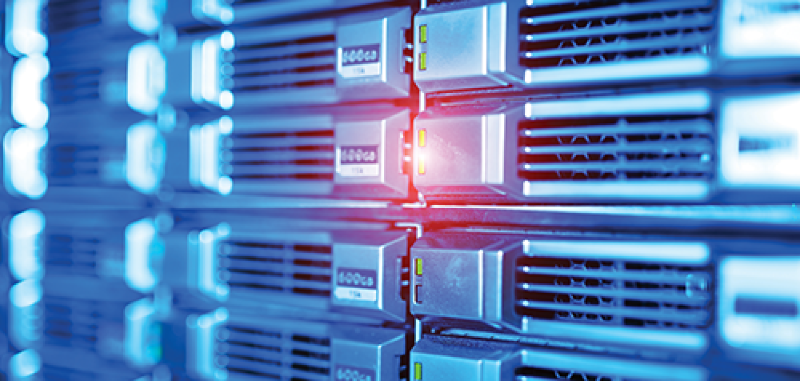I. Introduction: When Data Can’t Keep Up with Compute
Imagine this: you’ve invested in the world’s fastest GPU cluster, capable of performing trillions of calculations per second. But instead of crunching numbers, your expensive hardware sits idle, waiting… waiting for data to arrive. This is the silent crisis playing out in AI labs and data centers worldwide. The fastest GPU cluster is useless if it’s constantly waiting for data to process.
Here’s the truth that every AI team needs to understand: high performance computing storage isn’t just about capacity—it’s about feeding your hungry GPUs the data they need to stay busy and productive. It’s the difference between a finely tuned racing engine and one that sputters because the fuel line can’t keep up.
In this article, we’ll explore how the right storage strategy, combined with optimized GPU management, unlocks the true potential of your AI infrastructure. Because when your storage can keep pace with your compute, everything changes.
II. What Makes Storage “High Performance” for AI?
Not all storage is created equal, especially when it comes to feeding data-hungry AI workloads. Traditional storage systems designed for file sharing or databases simply can’t keep up with the demands of modern AI training. So what exactly makes storage “high performance” for AI?
Three critical metrics separate HPC storage from conventional solutions:
- IOPS (Input/Output Operations Per Second): Think of this as how many individual requests your storage can handle simultaneously. When training a model, your system might need to read thousands of small files at once—training images, text samples, or configuration files. High IOPS means no waiting in line.
- Throughput: This measures how much data can move through your storage system each second. While IOPS is about how many requests, throughput is about how much data. For loading large model checkpoints or processing high-resolution video datasets, you need a wide pipeline, not just a fast one.
- Latency: Perhaps the most crucial metric, latency measures how long it takes for a single request to be fulfilled. Low latency means your GPUs get the data they need almost instantly, while high latency means valuable processors sit idle waiting for responses.
Traditional storage is like a neighborhood library—great for one person checking out a book, but overwhelmed when hundreds of students need different books simultaneously. HPC storage, in contrast, is like a massive distribution center with robotic retrieval systems, designed to handle thousands of simultaneous requests efficiently.
When any of these metrics falls short, storage becomes the bottleneck in GPU-powered workflows. Your expensive NVIDIA H100s might be capable of processing data at astonishing speeds, but if your storage can’t deliver data quickly enough, you’re only using a fraction of your computing potential.
III. The GPU-Storage Bottleneck: Where AI Workflows Break Down
Let’s paint a familiar picture for many AI teams: You launch a training job on your cluster of NVIDIA A100 GPUs. The GPUs spring to life, their utilization spikes to 95%… for about 30 seconds. Then they plummet to 10% as they wait for the next batch of data to load from storage. This cycle repeats every few minutes throughout your training process.
This isn’t a hypothetical scenario—it’s the daily reality for teams using mismatched storage and compute resources. The impact is staggering: multi-million dollar GPU clusters often operate at just 30-50% utilization because they’re constantly waiting on storage systems that weren’t designed for AI workloads.
The cost equation is simple and brutal: storage delays directly increase GPU computing expenses. When you’re paying premium rates for high-end GPUs, every minute of idle time is money wasted. Consider this:
- A cluster of eight NVIDIA H100 GPUs might cost over $300,000 to purchase or thousands per month to rent
- If storage bottlenecks cause 40% idle time, you’re effectively wasting $120,000 of hardware value or paying for compute you can’t fully utilize
- Projects take longer to complete, delaying time-to-market and increasing personnel costs
The bottleneck becomes particularly painful with large language models. Training datasets measuring hundreds of gigabytes, model checkpoints that take minutes to save and load, and the constant shuffling of training samples—all these operations can bring your cutting-edge GPUs to their knees if your storage can’t keep pace.
IV. WhaleFlux: Bridging the Gap Between Storage and GPU Compute
This is where WhaleFlux changes the equation. While many GPU providers focus solely on raw compute power, WhaleFlux offers a comprehensive solution that understands the critical relationship between storage and GPU compute. We recognize that providing the fastest GPUs is only half the battle—the real magic happens when storage and compute work in perfect harmony.
WhaleFlux is an intelligent GPU resource management tool designed specifically for AI enterprises, and it optimizes data pipeline efficiency through several key capabilities:
- Intelligent Data Staging and Prefetching: WhaleFlux doesn’t wait for your GPUs to ask for data. It analyzes your training patterns and proactively stages data closer to your compute resources. Think of it as having a smart assistant who anticipates what you’ll need next and has it ready before you even ask.
- Coordinated Scheduling Between Storage and GPU Resources: Instead of treating storage and compute as separate systems, WhaleFlux manages them as an integrated unit. It ensures that data movement and GPU processing are perfectly synchronized, eliminating the stop-and-go patterns that plague so many AI workflows.
The platform supports a range of high-performance GPUs—from the flagship NVIDIA H100 and H200 for massive model training, to the reliable A100 for production workloads, and the cost-effective RTX 4090 for development and prototyping. Each of these GPUs has different storage requirements, and WhaleFlux is designed to optimize data flow for all of them.
For instance, when working with H100 or H200 clusters designed for foundation model training, WhaleFlux ensures that your storage infrastructure can deliver the massive datasets these cards are capable of processing. Similarly, for A100 workloads or RTX 4090 development setups, the system automatically adjusts data handling strategies to match the specific performance characteristics of each GPU type.
V. Building Your End-to-End AI Infrastructure: A Practical Guide
Building a balanced AI infrastructure requires careful matching of storage solutions to your GPU capabilities. Here’s a practical guide to creating a system where storage and compute work together, not against each other:
- H100/H200 Clusters: NVMe-over-Fabric Solutions
When you’re investing in top-tier GPUs like the NVIDIA H100 or H200, you need storage that can match their incredible processing speed. NVMe-over-Fabric (NVMe-oF) solutions provide network-attached storage with near-local performance, eliminating the storage bottleneck for your most demanding workloads. These systems can deliver the millions of IOPS and massive throughput needed to keep your elite GPUs fully utilized. - A100 Workloads: High-Performance Parallel File Systems
For production environments running on NVIDIA A100 GPUs, high-performance parallel file systems like Lustre or Spectrum Scale provide the perfect balance of performance, capacity, and reliability. These systems are designed to handle multiple simultaneous data streams, making them ideal for teams running multiple training jobs or working with large, shared datasets. - RTX 4090 Development: Local NVMe with Centralized Storage
For development and prototyping work on NVIDIA RTX 4090 systems, a hybrid approach works well. Fast local NVMe storage provides quick access to active datasets and code, while centralized high-performance storage handles version control, backups, and larger datasets. This gives developers speed where they need it while maintaining proper data management practices.
WhaleFlux’s flexible purchase/rental model provides the perfect foundation for these storage-integrated solutions. With a minimum one-month commitment (not hourly), you get the stability needed for serious AI work while maintaining the flexibility to scale as your needs evolve. Whether you choose to purchase WhaleFlux-managed GPUs for long-term projects or rent them for specific initiatives, you’re getting a system designed with the complete data pipeline in mind.
VI. Real Results: Case Study of Accelerated AI Training
Consider the experience of NeuroSync AI, a mid-sized company specializing in medical imaging analysis. They were struggling with training times that were jeopardizing their product launch timeline.
Before: Training Workflow Limited by Storage Bottlenecks
NeuroSync had invested in a powerful cluster of NVIDIA A100 GPUs but paired them with conventional enterprise storage. Their typical training job for a neural network analyzing MRI scans showed a familiar pattern:
- GPU utilization: 35% average
- Training time per epoch: 4 hours
- Data loading delays: 40-60 seconds between batches
- Projected project completion: 12 weeks
Their expensive GPUs were idle more than they were working, and the team was considering purchasing additional hardware to compensate for the slow progress.
After: WhaleFlux-Optimized Storage and GPU Utilization
After implementing WhaleFlux with an appropriate high-performance storage backend, the results were transformative:
- GPU utilization: 75% average (40% improvement)
- Training time per epoch: 1.5 hours
- Data loading delays: 3-5 seconds between batches
- Actual project completion: 6 weeks
The Metrics Tell the Story
The numbers spoke for themselves: 3x faster data loading, 40% better GPU utilization, and a 50% reduction in overall project completion time. But beyond the metrics, the team could now focus on model development rather than infrastructure troubleshooting. The WhaleFlux platform’s intelligent data management ensured that their A100 GPUs were consistently fed data, turning a stalled project into a successful product launch.
VII. Conclusion: Stop Letting Storage Throttle Your AI Ambitions
The evidence is clear: HPC storage is not an IT afterthought—it’s a strategic AI accelerator that can make or break your machine learning initiatives. When storage and compute work in harmony, you achieve the performance you paid for when you invested in high-end GPUs.
True high-performance computing requires synchronized storage and GPU resources. It’s not enough to have the fastest GPUs if your storage system can’t keep them fed with data. The most successful AI teams understand this relationship and build their infrastructure accordingly.
Ready to experience the difference that optimized storage and GPU coordination can make? Explore the WhaleFlux platform today and discover how our storage-aware scheduling and managed GPU solutions can transform your AI workflows. Stop letting storage bottlenecks throttle your ambitions—let WhaleFlux help you build an infrastructure where every component works together to accelerate your success.

